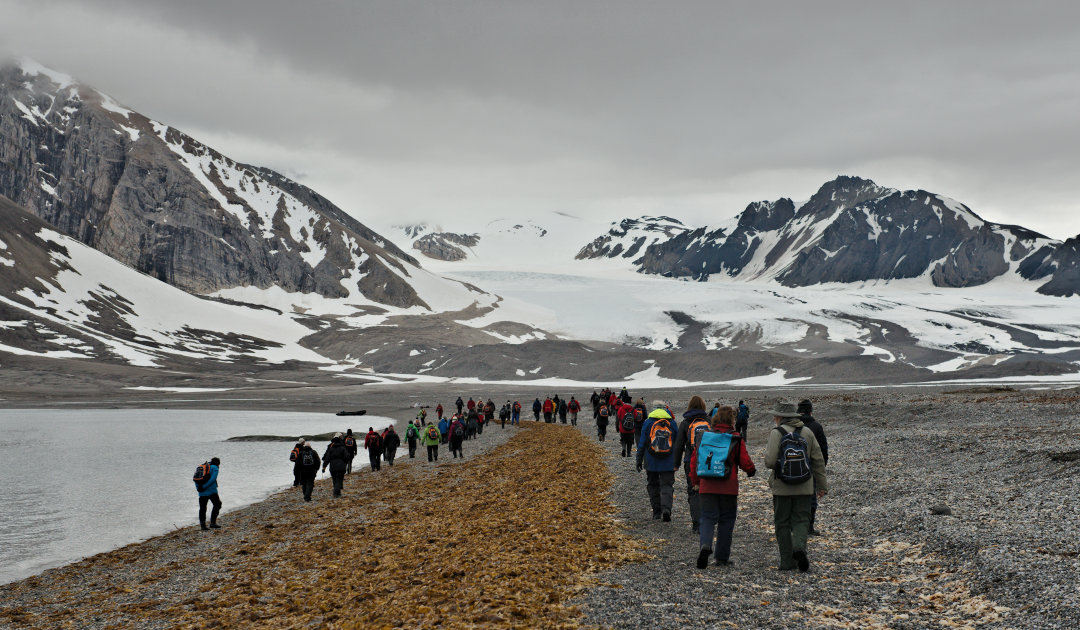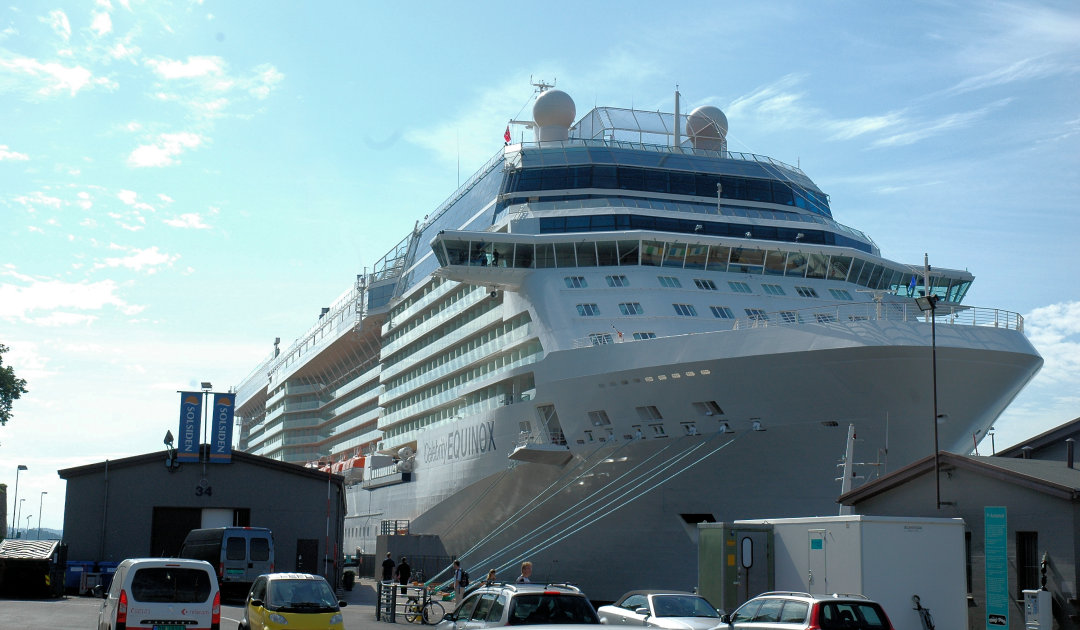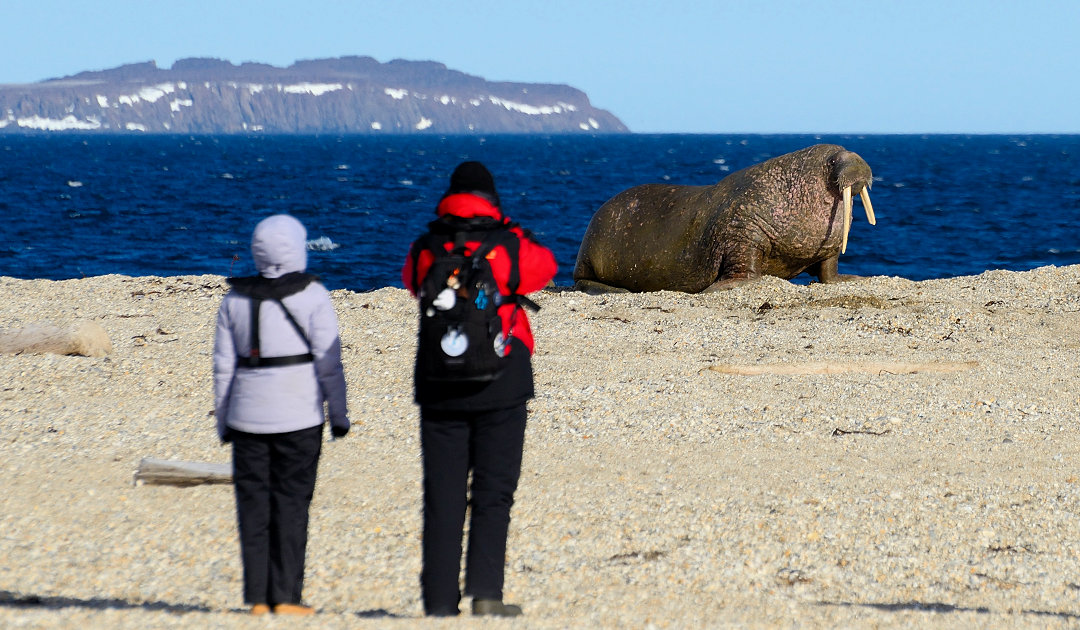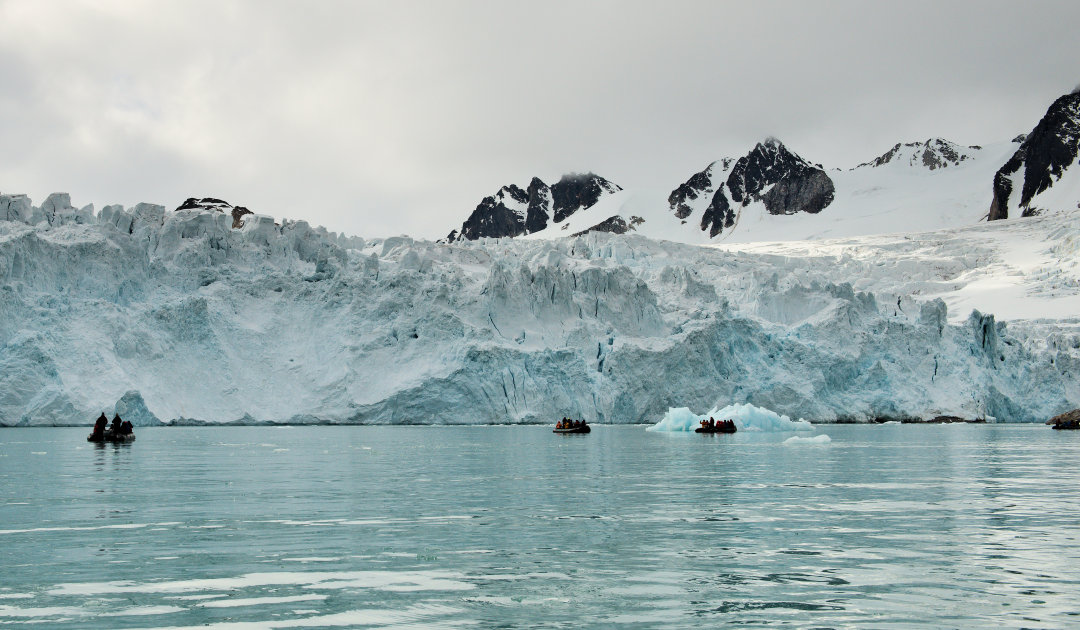
Svalbard is the perfect introduction to the world of polar tourism for many people willing to travel. The archipelago displays almost everything the Arctic has to offer and is also relatively easy to reach by transport. These benefits have been reflected in the increasing number of visitors and local service providers to Longyearbyen. But what is the attitude of Longyearbyen’s population as a whole to the issue? Visit Svalbard, which serves as a mouthpiece for local tourism, wanted to investigate this question and had a survey conducted, with surprising results.
The figures speak for themselves: around 88% of respondents think that tourism is good for Longyearbyen overall. At the same time, however, nearly three-quarters of respondents have a negative attitude specifically toward cruise tourism, Visit Svalbard reports in a press release. On the one hand, the majority of respondents see tourism as a good and profitable opportunity for jobs and community development. But the number of cruise tourists is seen as negative and disruptive. Interestingly, tourists on the whole are attested to be respectful and pleasant during their stay. Only the number of tourists per day is perceived as negative. In contrast, land-based tourism — such as visitors taking excursions from Longyearbyen — is seen as positive, both economically and in terms of sustainability.

For Visit Svalbard the numbers are only somewhat surprising. “The surveys confirm some of our assumptions, and the master plan must therefore also address the important sustainability work,” explains Trine Krystad, of Visit Svalbard. “Communicating sustainability in a credible and understandable way is challenging, and we will strengthen our communication on this topic to guests, the local population and what we call the local destination management.” It is seen as positive that the population at large is behind tourism and recognises the benefits of a sustainably managed approach. According to the survey, 73% of respondents want Longyearbyen to remain a tourist destination. But they also see the room for improvement, especially in terms of the public’s perception of cruise tourism. Therefore, together with the stakeholders, they want to continue to inform about the contributions of cruise tourism to the development of the community and thus improve the image a bit.


Visit Svalbard’s approach to improving the impression is also important, as, in 2019, before the pandemic, more than 39,000 guests had come to Longyearbyen aboard cruise ships after all. In addition, there were 23,000 expedition-ship passengers who visited Svalbard. But this is where a key difference lies: expedition guests are more economically viable for the community than cruise guests, as a 2018 study by the Association of Arctic Expedition Cruise Operators, an industry representative, and Visit Svalbard shows. And this is also reflected in the perception within the population: “Too many people on individual days that bring too little.” Therefore, Visit Svalbard wants to promote year-round tourism in Svalbard. “By spreading traffic throughout the year and using existing capacity, the tourism industry will contribute to a healthier economy and a viable local community with more year-round jobs,” Krystad believes.

As part of the survey, Visit Svalbard also wanted to find out more about “Visible Sustainability”. It was important to see how guests and Svalbard residents view this topic. And they give tourism in Svalbard and Longyearbyen a good overall report: about 80% of the guests think that Longyearbyen is a sustainable destination that takes care of the environment, the cultural heritage and the population. The picture is somewhat more differentiated among residents, who experience the problems firsthand, particularly with regard to energy supply and other environmental and sustainability-related issues. But also the way land-tour and expedition-travel providers deal with the issue of “environmentally sustainable tourism” and implement the measures had been observed more than half of the guests. On the whole, Visit Svalbard was very satisfied with the results of the survey and felt it could build on them to further develop Longyearbyen with the help of tourism: “We take our social mission seriously and will use the knowledge for a fact-based development of the destination for the benefit and enjoyment of residents and visitors,” Krystad says. “We also hope the surveys can be useful to businesses, the local community and our partners so we can work together to identify which guests have the smallest negative footprint and who also contributes to local value.”
Dr Michael Wenger, PolarJournal
See the full results of the survey on the Visit Svalbard website.
More about this topic





